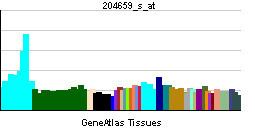Entrez 2671 | Ensembl ENSG00000127554 | |
 | ||
Aliases GFER, ALR, ERV1, HERV1, HPO, HPO1, HPO2, HSS, growth factor, augmenter of liver regeneration External IDs MGI: 107757 HomoloGene: 55884 GeneCards: GFER | ||
Growth factor, augmenter of liver regeneration (ERV1 homolog, S. cerevisiae), also known as GFER, is a protein which in humans is encoded by the GFER gene.
Contents
This gene is also known as Essential for Respiration and Vegatative growth/Augmenter of Liver Regeneration/Growth Factor Erv1-like/Hepatic regenerative Stimulation Substance/hepatopoietin.
Genomics
The gene resides on chromosome 16 in the interval containing the locus for polycystic kidney disease (PKD1). The putative gene product is 42% similar to the scERV1 protein of yeast. The human gene has three exons: the first encodes a 5' untranslated region and the first part of the protein; the second encodes the bulk of the protein; and the third the remainder.
Molecular biology
Proteins of the ERV1/ALR family are encoded by all eukaryotes and cytoplasmic DNA viruses for which the sequence data are available. All possess a C-X-X-C motif within a ~100 amino acid domain
Function
The hepatotrophic factor designated augmenter of liver regeneration (ALR) is thought to be one of the factors responsible for the extraordinary regenerative capacity of mammalian liver. It has also been called hepatic regenerative stimulation substance (HSS). The yeast scERV1 gene had been found to be essential for oxidative phosphorylation, the maintenance of mitochondrial genomes, and the cell division cycle. The human gene is both the structural and functional homolog of the yeast scERV1 gene.
This protein interacts with Mia40 during the import of intermembrane space proteins including the small Tim proteins Cox17 and Cox19 both of which have disulfide bonds.
Interactions
GFER has been shown to interact with COP9 constitutive photomorphogenic homolog subunit 5 and BNIPL.
